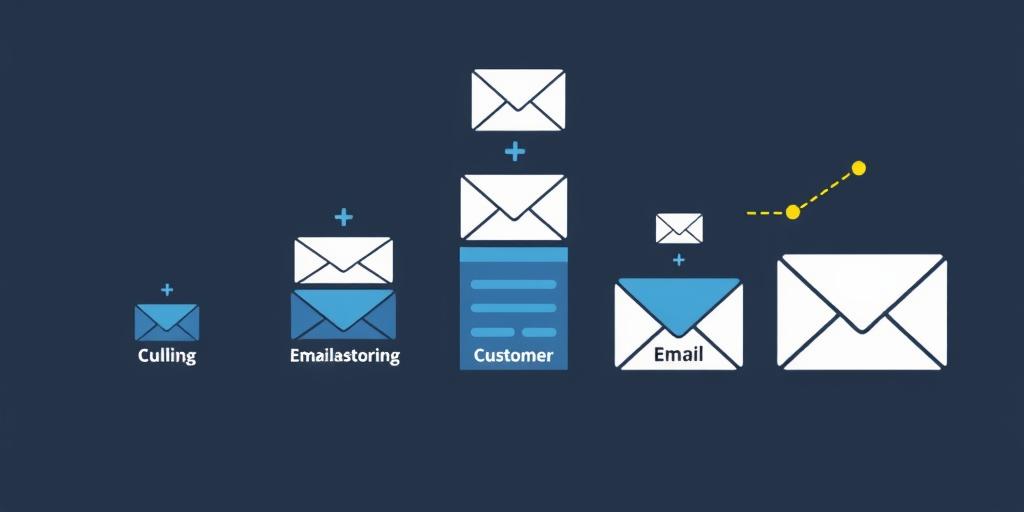Email marketing funnels are automated systems designed to nurture potential customers, or leads, through the buying process. These funnels guide individuals from initial awareness to becoming loyal customers through a series of targeted emails. This post explores how email marketing funnels work and how to effectively build them.
Understanding the Email Marketing Funnel
The email marketing funnel mirrors the traditional marketing funnel, consisting of stages like awareness, interest, consideration, and decision. Each stage involves specific content and goals:
- Awareness: Introduce your brand and products. This might involve welcome emails, blog posts, or lead magnets.
- Interest: Provide valuable content to maintain engagement. Send newsletters, case studies, and educational material.
- Consideration: Demonstrate how your product solves their problems. Use webinars, product demos, and customer testimonials.
- Decision: Encourage purchase with special offers, discounts, and limited-time promotions.
Building an Effective Email Marketing Funnel
To create a successful email marketing funnel, consider these steps:
- Define Your Audience: Understand their needs, preferences, and pain points. Tailor your content accordingly.
- Set Clear Goals: Determine what you want to achieve at each stage, such as increasing sign-ups or boosting sales.
- Create Engaging Content: Craft high-quality emails that provide value and resonate with your audience.
- Automate Your Emails: Use email marketing software to schedule and send emails automatically based on triggers and timing.
- Analyze and Optimize: Monitor key metrics like open rates, click-through rates, and conversion rates to refine your funnel.
Best Practices for Email Marketing Funnels
- Personalization: Use data to personalize emails and create a more relevant experience.
- Segmentation: Divide your audience into smaller groups based on demographics, behavior, and interests.
- Mobile Optimization: Ensure your emails look great on all devices.
- A/B Testing: Experiment with different subject lines, content, and calls-to-action to improve performance.
- Compliance: Adhere to email marketing regulations like GDPR and CAN-SPAM.
Examples of Successful Email Marketing Funnels
Many companies use email marketing funnels to drive customer engagement and sales:
- E-commerce Stores: Send abandoned cart emails, product recommendations, and post-purchase follow-ups.
- SaaS Companies: Offer free trials, onboarding emails, and upgrade promotions.
- Educational Platforms: Provide course previews, student testimonials, and enrollment incentives.
Conclusion
Email marketing funnels are powerful tools for nurturing leads and driving conversions. By understanding the different stages, creating engaging content, and continuously optimizing your approach, you can build effective funnels that turn cold leads into loyal customers.









